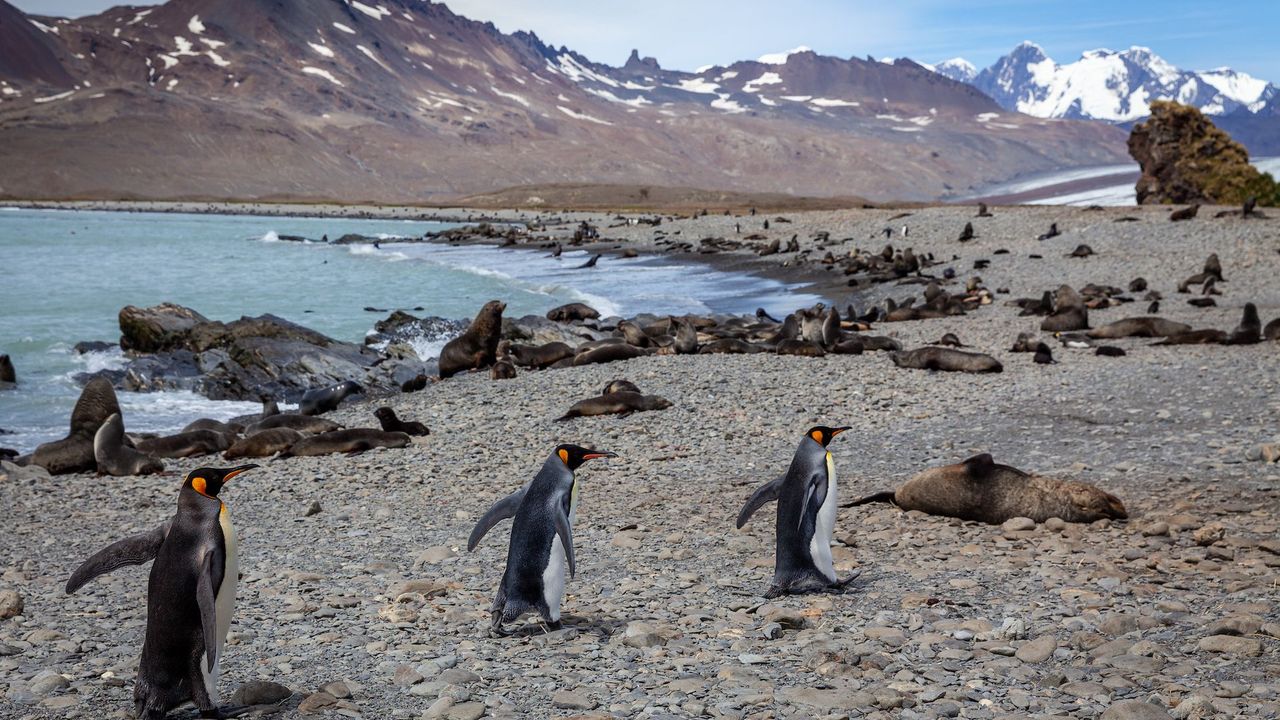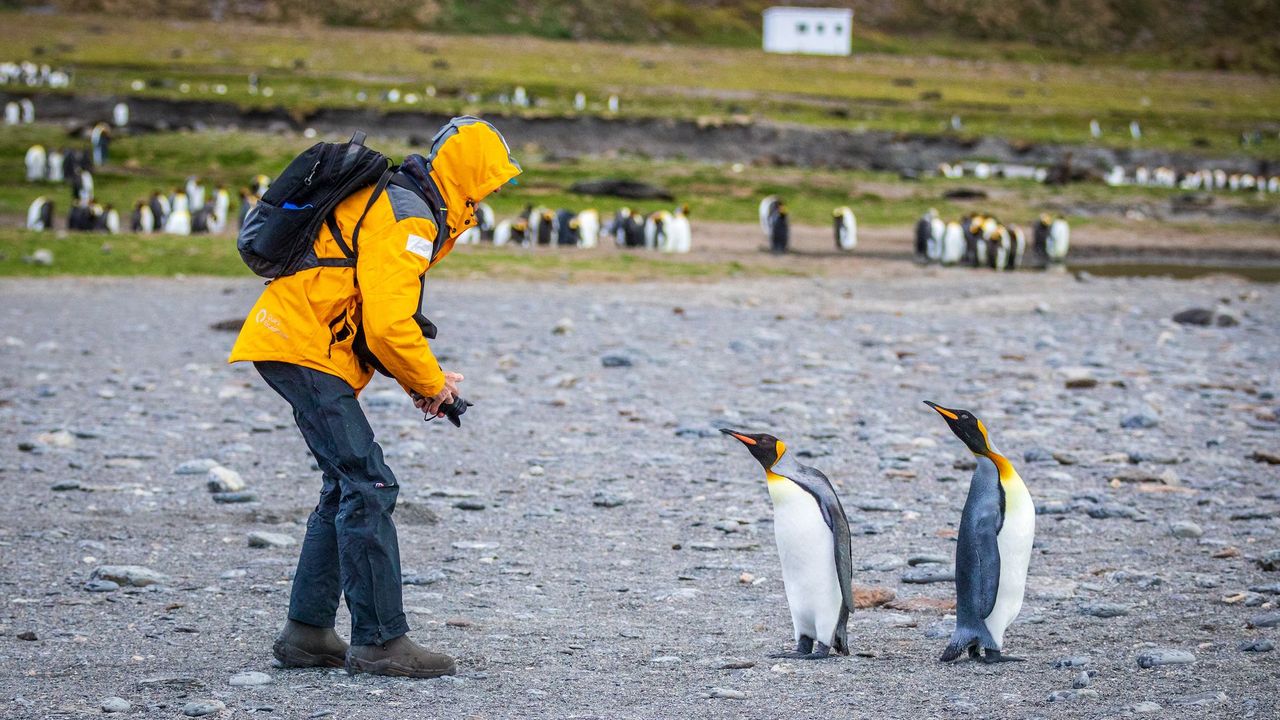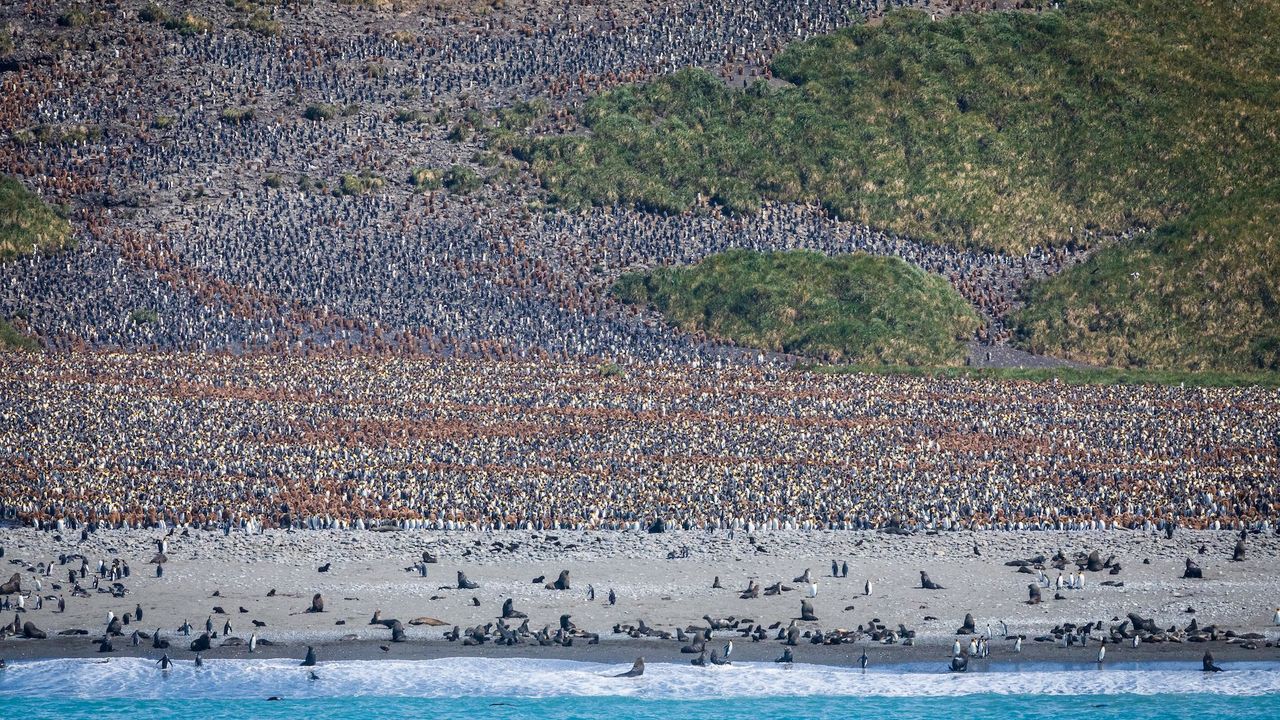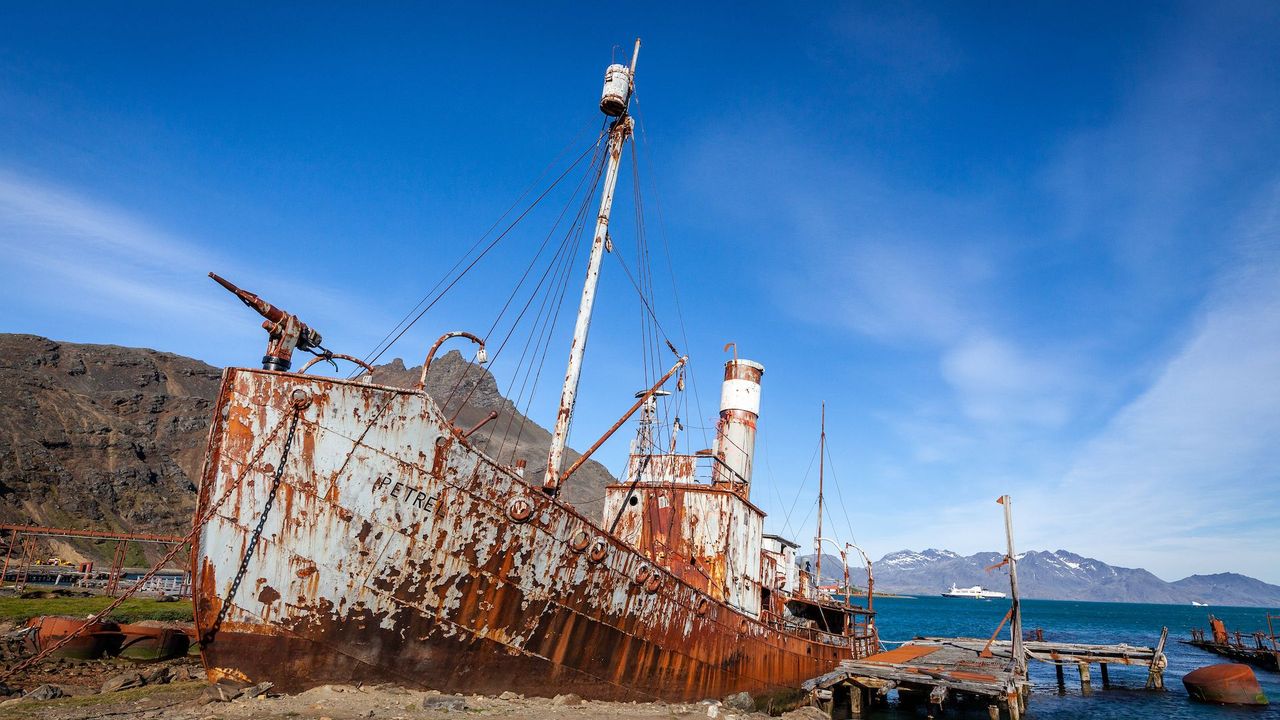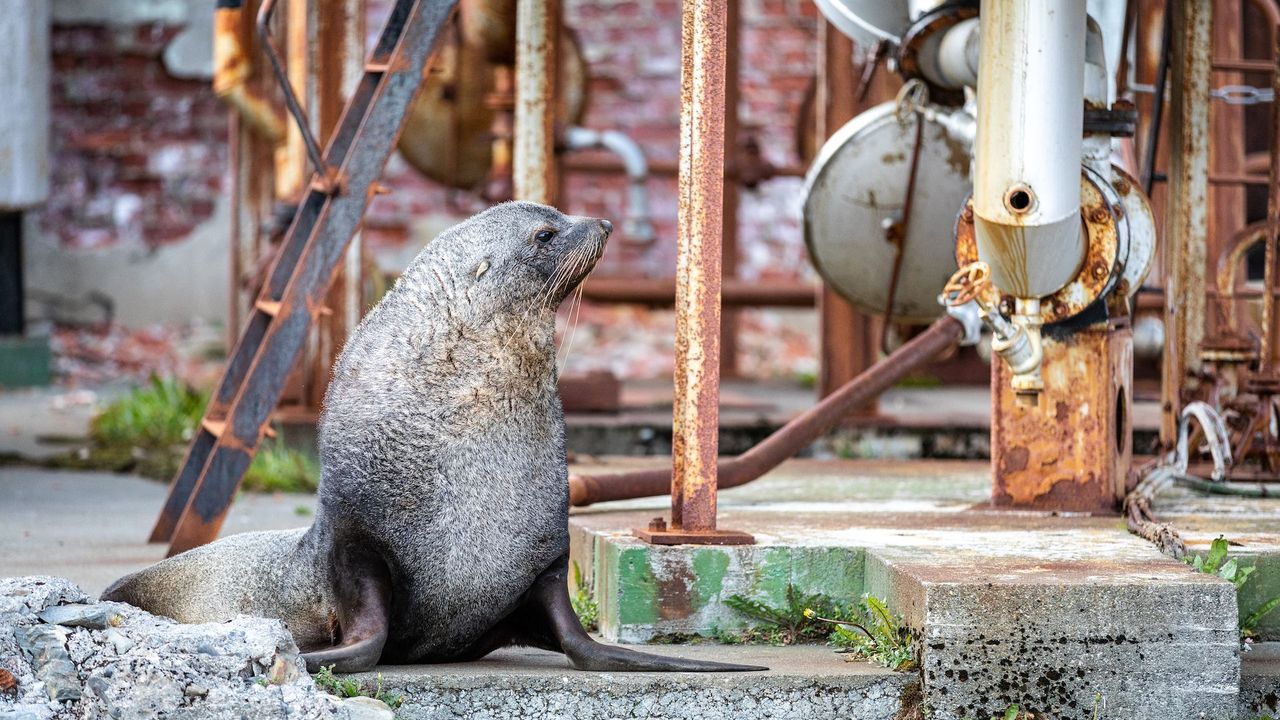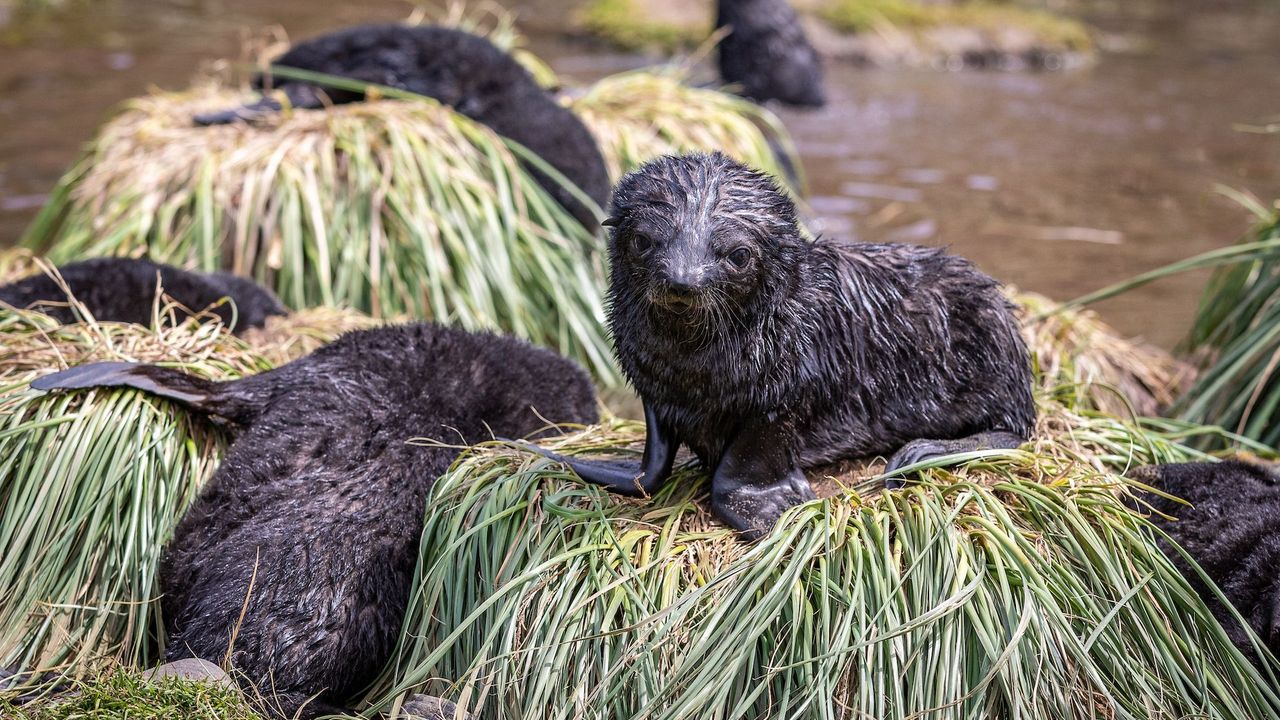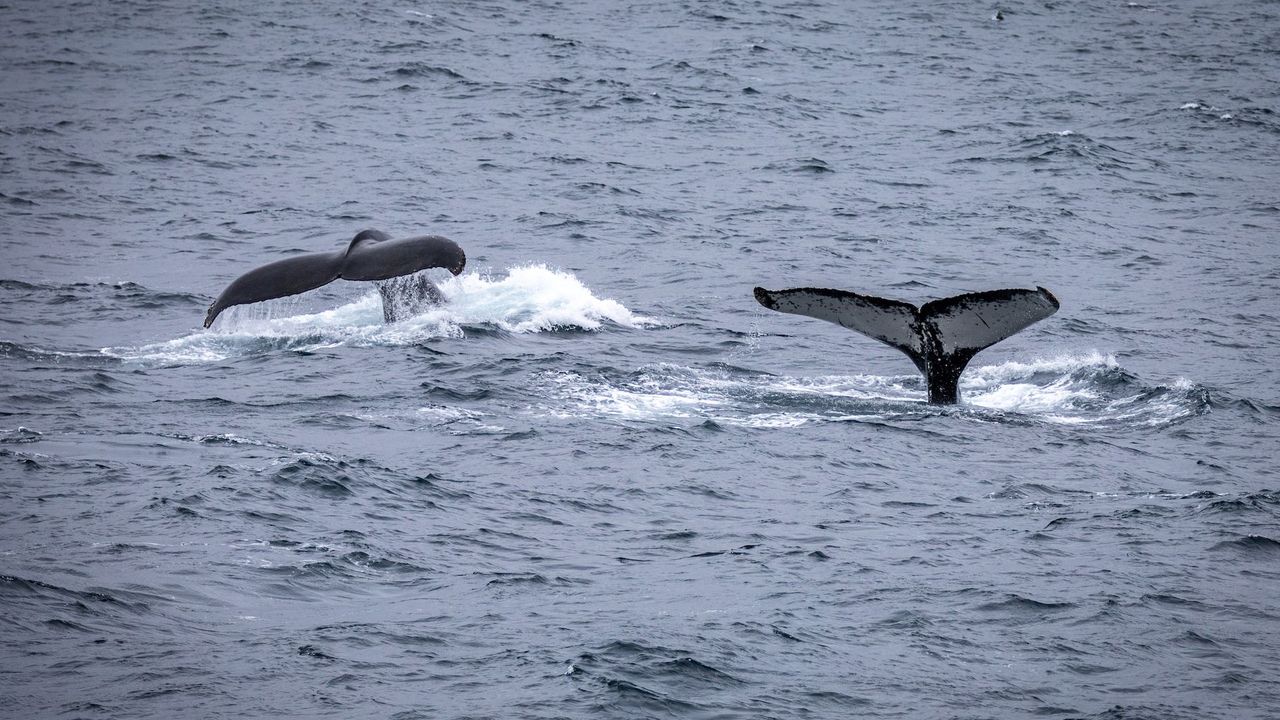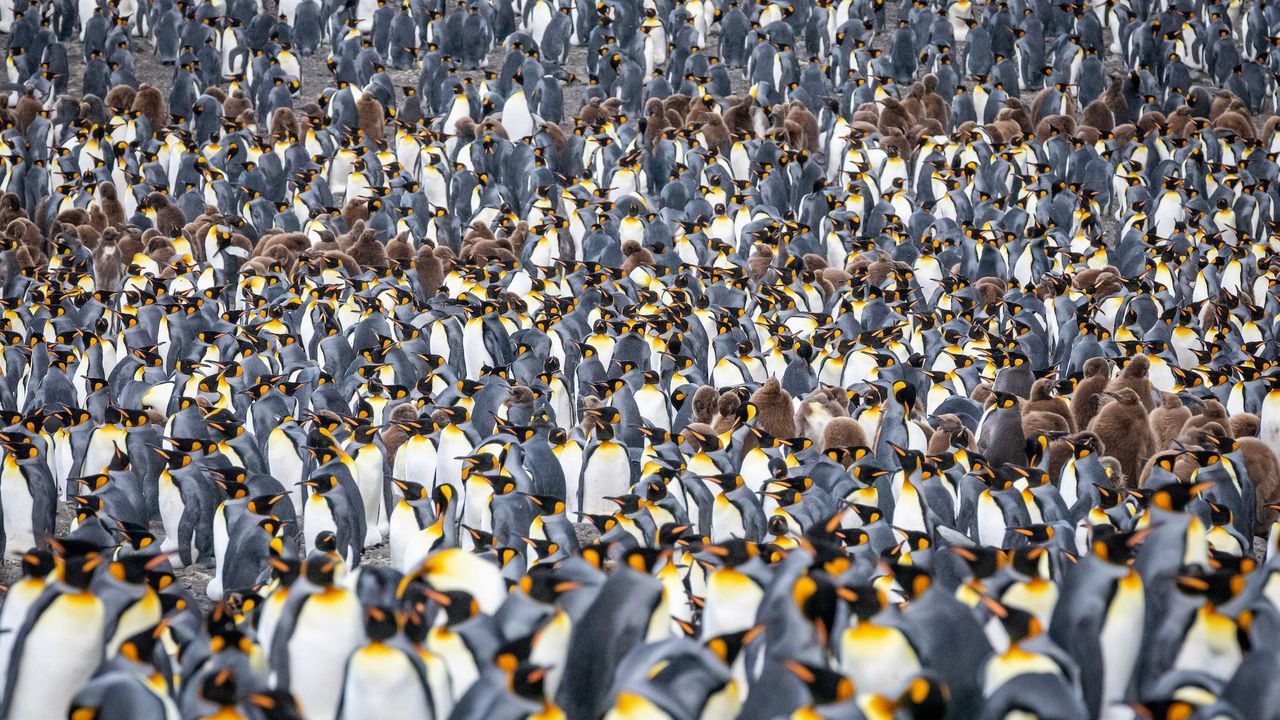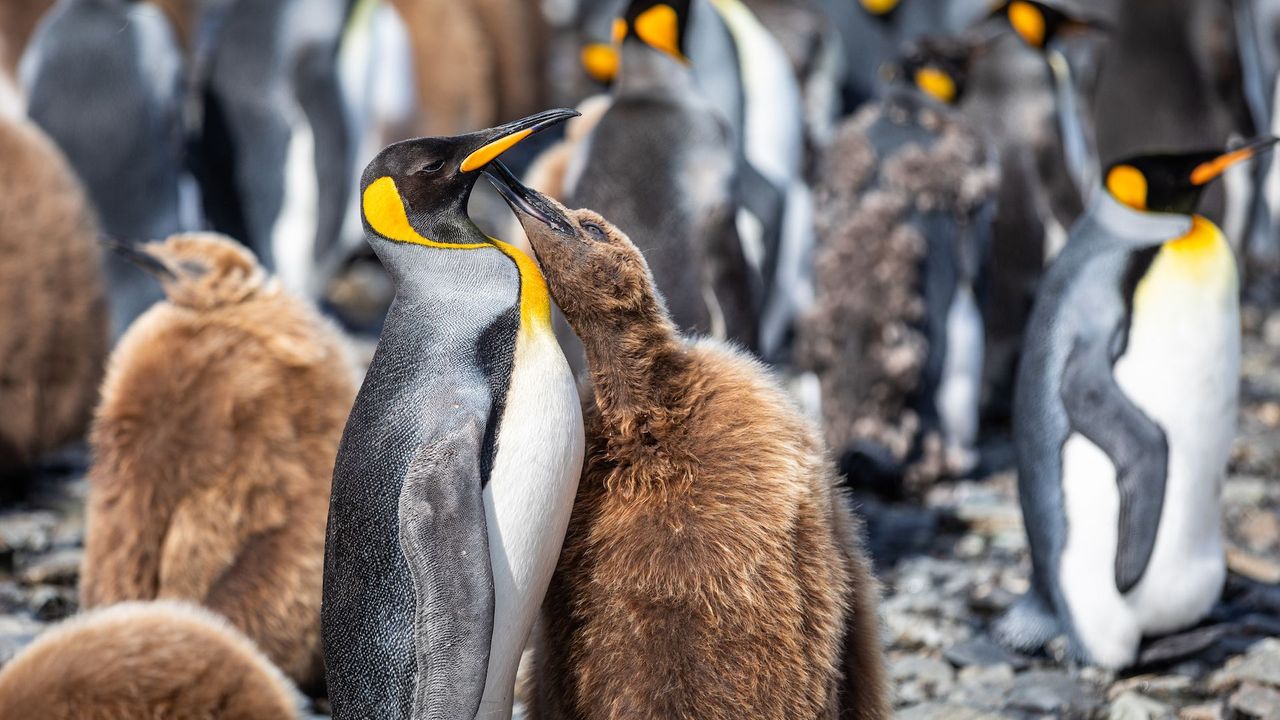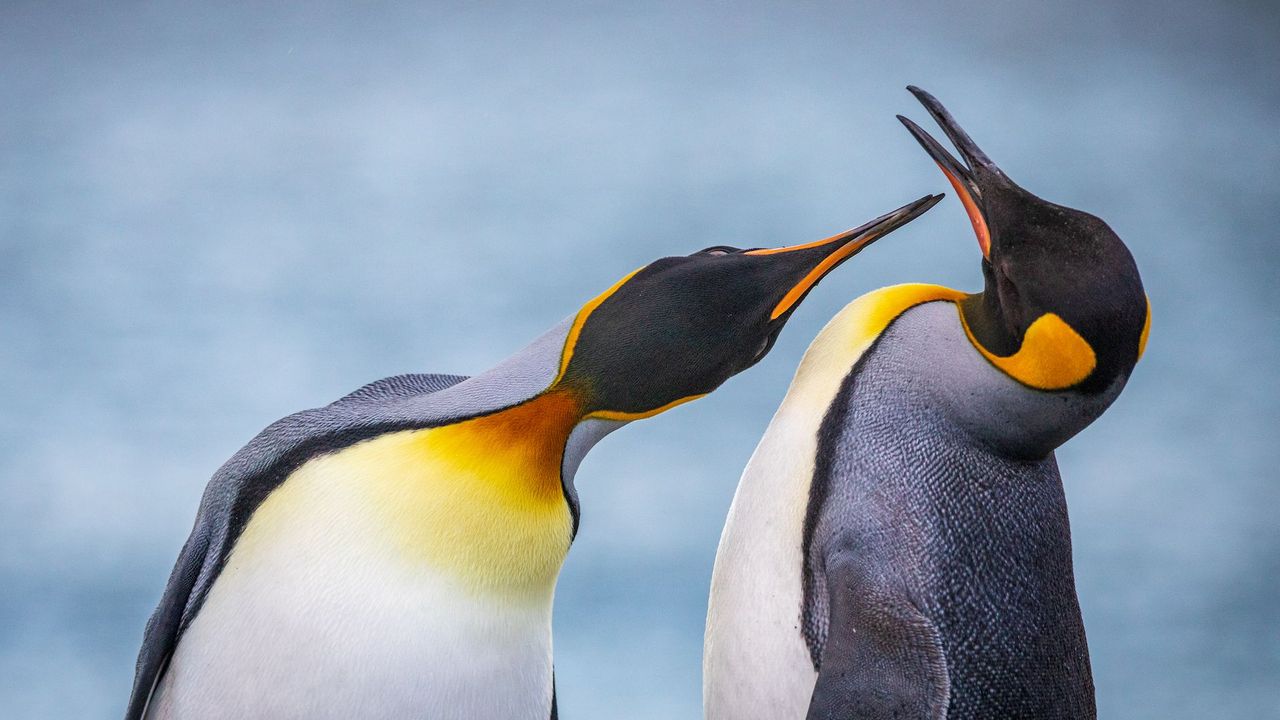With no permanent residents and millions of animals, South Georgia island is one of the world’s most biodiverse places. Yet, few Brits have ever heard of it.
A far-flung British territory
Marooned in the South Atlantic Ocean between Argentina and Antarctica, the glaciated peaks and billowing tundra grasses of South Georgia cast a dramatic scene. Though the crescent-shaped island is technically a British Overseas Territory, it’s also claimed by Argentina and is so remote and hard to get to that many people in the United Kingdom have never even heard of it. There’s no airport, so the only access is by boat from Tierra del Fuego or the Falkland Islands, a journey of at least two days and nights across some of the roughest seas in the world.
But South Georgia’s remote location is the island’s secret blessing, because here, well away from humans, nature is flourishing. In fact, South Georgia has such a stunning and surprising array of biodiversity that this near-Antarctic oasis is often referred to as “The Galapagos of the Poles”. (Credit: Bella Falk)
Located about 1,000km east of the Falkland Islands, South Georgia is the largest dot in a spectacularly picturesque but inhospitable archipelago called South Georgia and the South Sandwich Islands. It’s about 160km from tip to toe and covers an area of about 3,527 sq km, making it roughly the same size as Cornwall.
The island was first spotted by sailors in the 17th Century, but it wasn’t until 1775 that Captain James Cook made the first landing. He claimed South Georgia for Britain and named it the Isle of Georgia in honour of King George III. In 1916, British explorer Sir Ernest Shackleton crossed South Georgia while searching for aid during his ill-fated trans-Antarctic expedition, later dying on the island.
It’s a harsh but magnificent environment, where snow-capped mountains more than 2,000m tall plunge into deep fjords, and crystal blue glaciers calve into the frigid waters with a thundering rumble. Three-fourths of the island is covered in permanent ice and snow; and with no major land masses nearby for protection, it’s frequently battered by vicious South Atlantic winds. (Credit: Bella Falk)
A once-in-a-lifetime destination
South Georgia has no permanent residents. Around 30 people live here temporarily, made up of scientists at the King Edward Point research base and summer staff who manage the visitor centre and museum for the few tourists willing and able to make the long journey.
They come on small cruise ships or yachts, crossing from Ushuaia, Argentina, via the Falkland Islands and then on to Antarctica. But there is no accommodation on the island for visitors, and access is restricted, with landings limited to just 100 people on shore for no more than a few hours at a time.
All this makes South Georgia one of the least-visited tourist destinations in the world, with only around 10,000 visitors last year. (Credit: Bella Falk)
Abundant wildlife
Remarkably, this inhospitable frozen rock is one of the most biodiverse places on the planet. In 2011, a British Antarctic Survey study identified almost 1,500 different animal species in and around the island – from tiny worms to mammoth blue whales – leading scientists to conclude that South Georgia boasts more biodiversity than the Galapagos Islands.
South Georgia’s surprising array of life stems from its proximity to the Antarctic Convergence, a natural boundary where the warmer waters of the Atlantic Ocean meet the colder waters of the Southern Ocean. The resulting nutrient-rich currents create perfect conditions for Antarctic krill, which then attract predators like fish, whales, seals and penguins. (Credit: Bella Falk)
The South Georgia whaling industry
The island hasn’t always been a wildlife oasis. In the 19th and 20th Centuries, South Georgia was the hub of the Southern Ocean whaling and sealing industries, with the settlement of Grytviken the largest of the seven whaling stations established on the island. From its founding in 1904 for more than 60 years, tens of thousands of whales where caught, brought ashore and processed to extract oil. Hundreds of thousands of penguins and seals were also slaughtered for their oil, fur and meat.
Today, the rusting carcasses of tall, cylindrical burners are all that remain of the former blubber cookery, where blubber stripped from whales was heated under steam pressure for about five hours to release the oil. The best quality oil was used for soap, lard and margarine, with lower grades used for fuel and to make glycerine for explosives. Products from a single whale could fetch £2,500 – the equivalent of £300,000 today. (Credit: Bella Falk)
Industrialised killing
Steam-powered ships like this one, named Petrel, would head out into the waters around the island to hunt for whales. When one was spotted, it would be shot with a harpoon gun mounted on the prow and towed back to Grytviken for processing.
There, the whale would be winched up a slipway onto a large platform called the Flensing Plan, where workers would use long-handled knives to strip off the meat and blubber. Working at top speed, the men could cut up 30 fin whales, each 18-20m long, and process 200 tonnes of oil in a single day. (Credit: Bella Falk)
Nature returns
Between 1904 and 1966, around 175,000 whales were killed in South Georgia waters, driving them nearly to extinction. With fewer whales, seals and penguins left to kill, the industry was forced to shut down. The whalers went home, and over the last 50 years the animals have experienced a remarkable recovery.
Now, the once-bloody machinery lies empty; the abandoned boats and burners reclaimed by nature. Fat elephant seals bask lazily in the sunshine; king and gentoo penguins cluster on the beaches, curiously eyeing visitors; and male fur seals defend their territory amongst the winches and ovens. (Credit: Bella Falk)
Fur seal creche
At least 1.2 million Antarctic fur seals were killed on South Georgia, virtually wiping out the population. Today, the island is home to an estimated seven million penguins, 250,000 albatrosses, two million Antarctic fur seals and 400,000 southern elephant seals – half the world’s population – who come here every year to breed.
During breeding season from October to December, the beaches are so filled with wildlife that they appear to carpet the sand, and during this time, it’s believed that South Georgia is home to the greatest density of wildlife per square metre in the world. Territorial male “beach masters” guard their turf, while lost pups bleat mournfully as they wait for their mothers to return from foraging at sea. There are so many animals now that visitors are warned to be careful – adult fur seals are aggressive and can deliver a nasty bite. (Credit: Bella Falk)
An extraordinary recovery
The whales are returning, too. “We estimate there were only 500 humpback whales in the whole south-west Atlantic after they were decimated by whaling at South Georgia,” said Dr Jen Jackson from the British Antarctic Survey. “The latest estimates suggest there are now 25,000 humpback whales in the south-west Atlantic, which represents over 90% recovery relative to their pre-whaling numbers.”
During a survey in February 2020, researchers also spotted an astonishing 55 endangered blue whales around South Georgia, compared with just one sighting in 2018. (Credit: Bella Falk)
Carpet of penguins
The island is also home to one of the biggest king penguin colonies in the world, with up to 500,000 birds. At the largest site at St Andrew’s Bay, around 150,000 breeding pairs come back every year to raise their chicks.
With so many birds crowded together, the noise and smell can be overwhelming. King penguins don’t build nests; instead they lay a single egg and incubate it on their feet, keeping it warm under a flap of skin. The parents take turns looking after the egg while the other forages for food. (Credit: Bella Falk)
Proud parenting
Once the chick is about a month old, it’s left in a large creche watched over by a few adults. Both parents then go to sea to hunt, returning to feed their chick with regurgitated fish. King penguin chicks are curious and regularly wander off, so when they return, the parents must try to find their offspring by calling and listening for their young one’s distinct whistle. Even with so many other birds around, they still manage to find each other.
It takes around 14 months for a chick to become fully fledged, after which it will moult its fluffy brown feathers to reveal the black and white plumage of an adult penguin. (Credit: Bella Falk)
Extreme social distancing
Today there’s almost no people left on South Georgia. The coronavirus pandemic struck right at the very end of the summer season, and tourist visits have stopped. Most of the summer staff have gone home, and only a small handful of people remain, isolated from the rest of the world in this remote Eden.
“It’s hard to know how big an impact the pandemic will have on the wildlife,” said Dr Catherine Foley from Oxford University’s Penguin Watch project. “We’ll probably see a decline in tourism, as we saw after the 2008 recession.”
But Foley offered a word of caution. “Since the end of whaling and sealing operations on South Georgia, the island has been largely left to recover away from human influences. During that time, we’ve seen dramatic increases in whale, seal and penguin populations, but we are also seeing huge changes in ecosystems – ocean waters are warming, glaciers are retreating and foraging grounds are moving, all of which can have a dramatic effect on the wildlife. Now this special place faces a new challenge: that of a changing climate.” (Credit: Bella Falk)
Credit: Source link
